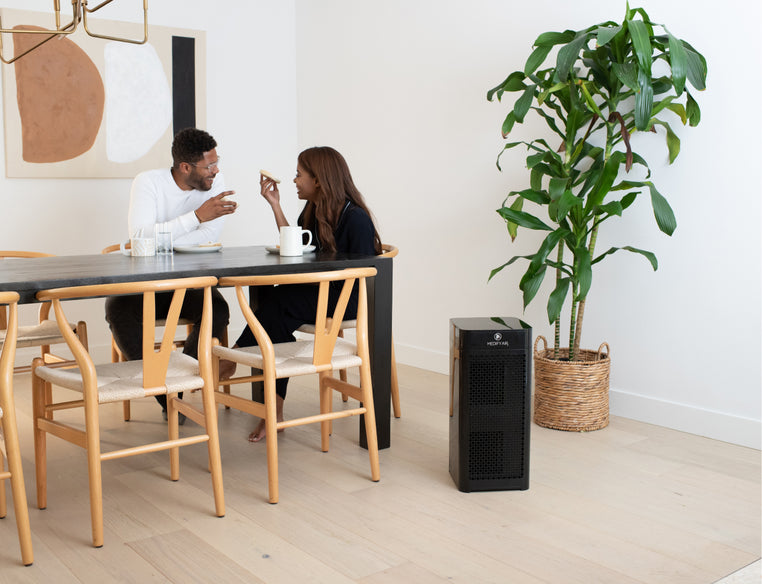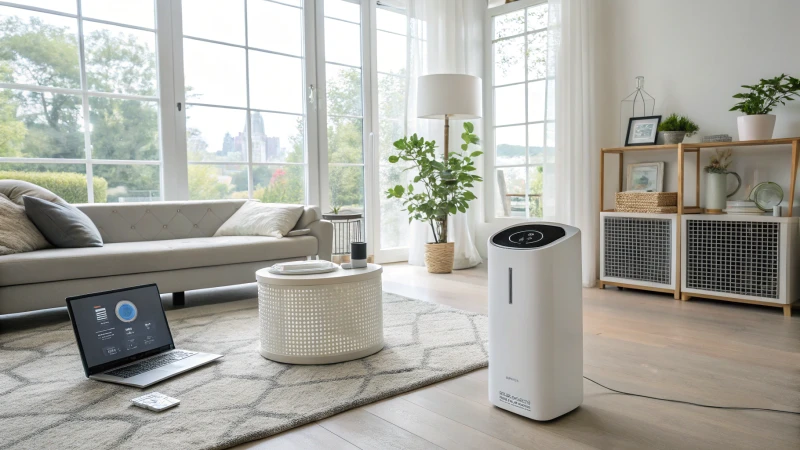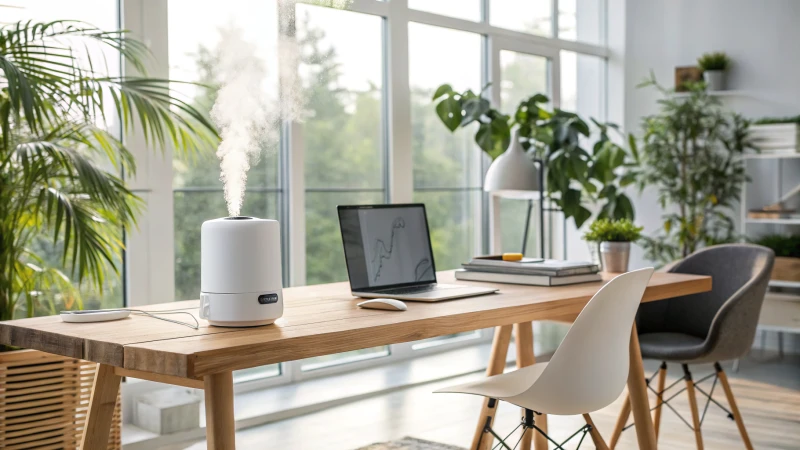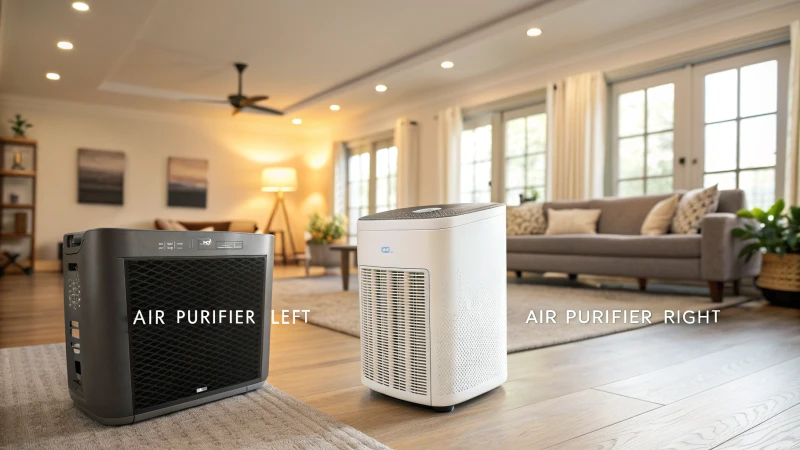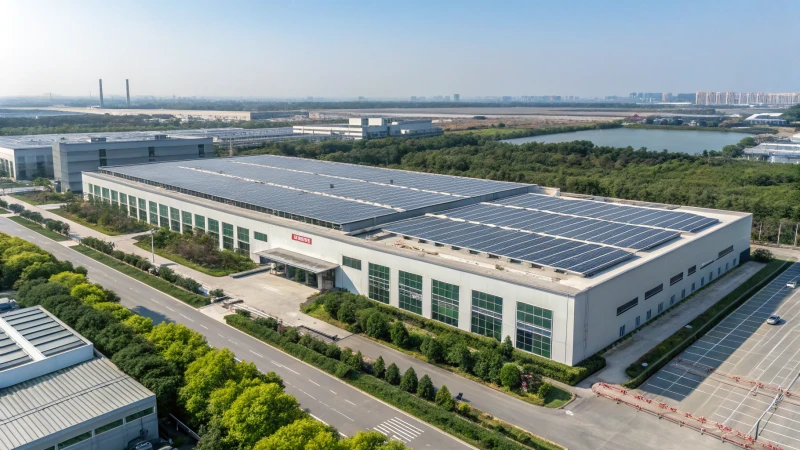Здесь представлены лучшие очистители воздуха от частиц дыма и их запаха: идеальное решение для улучшения воздуха в помещении и поддержания здорового образа жизни.
Все виды дыма, включая пассивное и третье пассивное курение, вредны для здоровья и могут сократить продолжительность жизни. Поэтому от них нужно избавляться любой ценой. Вопреки распространенному мнению, сигары, сигаретный дым или даже дым от лесных пожаров может быть уничтожен из воздуха с помощью воздухоочистителя.
Только не все воздухоочистители предназначены для удаления дыма. Для этого предназначены не обычные воздухоочистители с фильтрами, а True HEPA-фильтры с фильтрами из активированного угля. Кроме того, они должны обладать высоким показателем CADR (clean air delivery rate).
Краткий обзор лучших очистителей воздуха от дыма
Фото Нубелсон Фернандеш на Unsplash
Ниже перечислены лучшие воздухоочистители, которые эффективно удаляют дым. Эти очистители воздуха от дыма были признаны лучшими на основе их рейтинга, эффективности и качества.
Выбор редактора: Очиститель воздуха для 2000 квадратных футов
Choosing the best air purifier to help eliminate smoke particles and odor can be challenging. However, we’ve researched to make it easier for you to choose.
| Coway AP-1512 HH Mighty | HisoAir 1968 |
|
|
Лучший очиститель воздуха HEPA для дыма
В таблице ниже представлены лучшие очистители воздуха HEPA для дыма. Эти очистители не только эффективны в борьбе с дымом, но и просты в эксплуатации и управлении.
| Medify Air MA-40-W | HisoAir 1601 |
|
|
Лучший недорогой очиститель воздуха от дыма
Очистители воздуха, представленные в таблице ниже, предпочтительны благодаря своей доступности. Несмотря на доступность, они не уступают в производительности аналогичным, но более дорогим моделям.
| Очиститель воздуха Levoit Core 300 | HisoAir 1000 |
|
|
Самый тихий очиститель воздуха от дыма
Если вам особенно нужен воздухоочиститель, который не отвлекает от работы или сна, настоятельно рекомендуем эти два очистителя воздуха.
| Очиститель воздуха Blueair Blue Pure 411 | HisoAir 138 |
|
|
Лучшие очистители воздуха от дыма
Бороться с запахом дыма непросто, и выбрать лучший очиститель воздуха от дыма - не менее сложная задача. Приведенная ниже таблица будет полезна, если вы ищете лучший очиститель воздуха от дыма.
| Очиститель воздуха Hathaspace Smart True HEPA | HisoAir 1968 |
|
|
Что лучше для дыма: Очиститель воздуха против осушителя воздуха против ионизатора воздуха
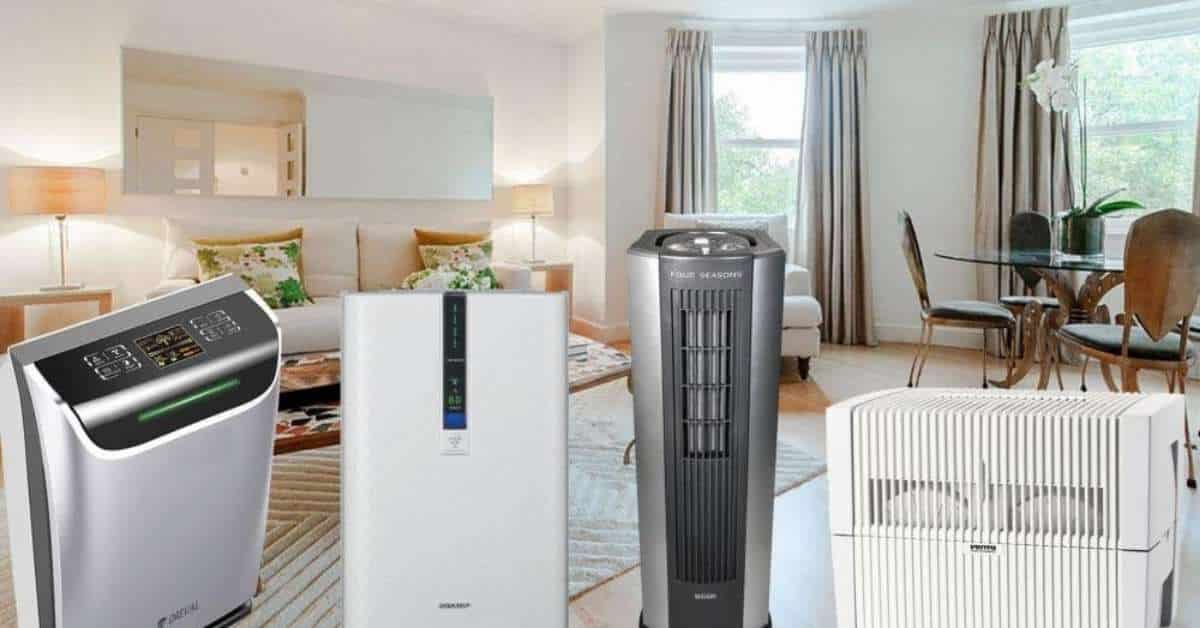
Изображение: Pinterest
Очистители воздуха, увлажнители воздуха и ионизаторы воздуха Все они играют разные роли в улучшении воздуха и используются для разных целей. В то время как воздухоочистители избавляют воздух от загрязняющих веществ, осушитель вводит влагу в воздух, а ионизатор воздуха ионизирует частицы, но не устраняет их. Уникальные функции этих трех приборов подробно рассмотрены ниже.
Очистители воздуха
Очиститель воздуха помогает отфильтровать мелкие частицы дыма, раздражители и другие загрязняющие вещества, включая запахи дыма. Но, в отличие от осушителя, он не добавляет влаги в воздух. Очистители воздуха предотвращают циркуляцию частиц, задерживая их через свой фильтр.
Осушитель
Увлажнители воздуха не очищают воздух, как воздухоочистители, но увлажняют его, защищая от воздействия отопления и искусственного воздуха в доме. Ультразвуковые увлажнители, однако, легко вносят в воздух минеральные частицы, которые негативно влияют на ткани легких.
Ионизаторы
Ионизаторы очищают воздух от загрязняющих веществ, но другим способом. Они задерживают частицы, делая их тяжелыми, что заставляет их падать на землю; это означает, что они могут легко вернуться в атмосферу в качестве загрязняющих веществ. Но ионизаторы производят озон, который также считается раздражающим фактором.
Очистители воздуха наиболее подходят и эффективны для очистки воздуха от частиц, запахов, загрязняющих веществ и раздражителей. Их следует использовать для устранения дыма и запахов, но для эффективной очистки они также должны содержать фильтр предварительной очистки и настоящий фильтр HEPA.
Зачем нужен очиститель воздуха от дыма?
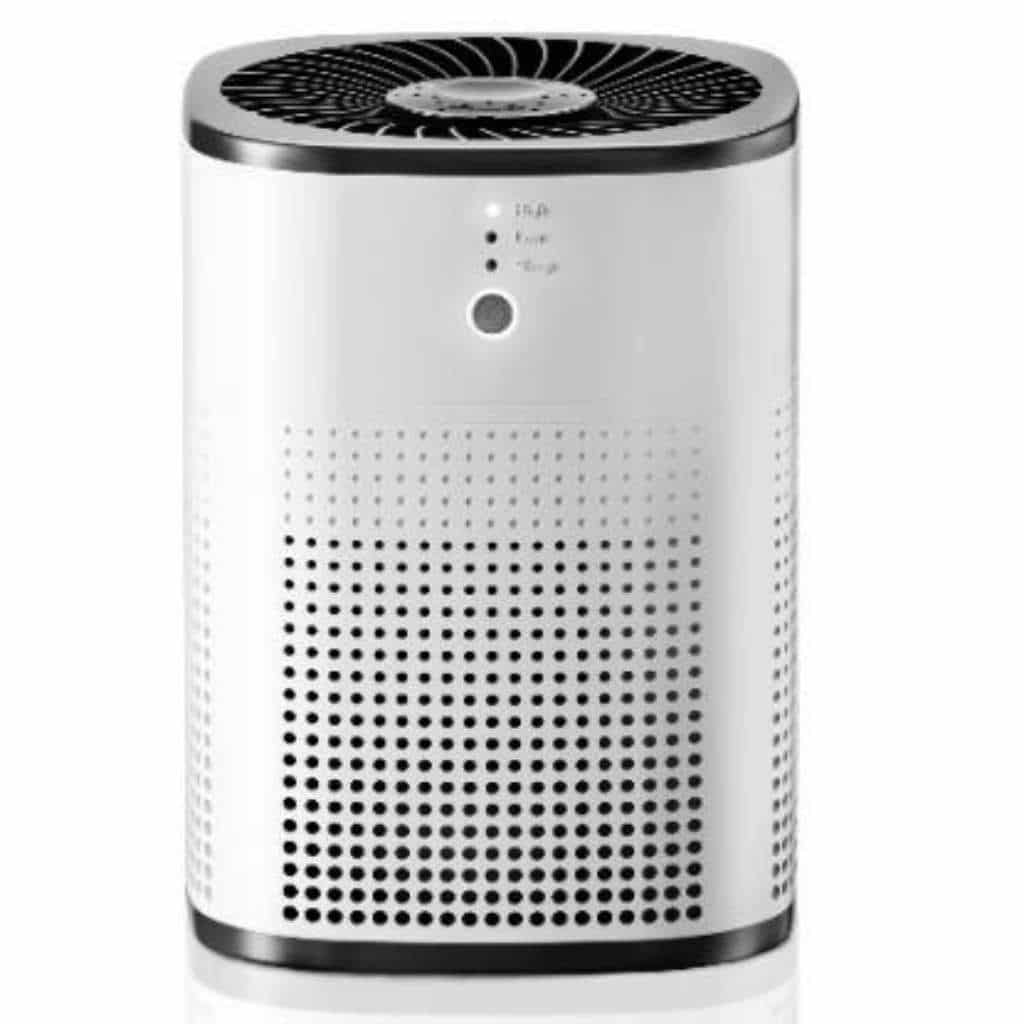
Изображение: Amazon.com
Курение опасно, включая непрямое курение, например пассивное и третье пассивное курениеи может привести к серьезным проблемам со здоровьем. По данным Центра по контролю и профилактике заболеваний (CDC), пассивное курение содержит более 7 000 токсинов и может воздействовать на кровеносные сосуды в течение нескольких секунд. Регулярное воздействие может привести к негативным последствиям для здоровья. Поэтому вам следует защитить себя и своих близких от подобных рисков, используя очиститель воздуха.
Ниже перечислены причины, по которым вам необходим очиститель воздуха от дыма.
Для профилактики сердечно-сосудистых заболеваний (ССЗ).
Курение влияет как на прямых, так и на косвенных курильщиков и повышает риск развития сердечно-сосудистых заболеваний на 25-30%, а инсульта - на 20-30%. Чтобы избавить воздух от дыма и его последствий, настоятельно рекомендуется использовать очистители воздуха.
Для устранения запахов дыма.
Частицы дыма можно удалить, оставив только запах. Но запах раздражает, а эффект от него опасен. Присутствие запаха дыма позволяет вам вдыхать многочисленные химические вещества и повышает вероятность развития таких заболеваний, как рак, пневмония и астматические состояния.
To prevent smoke from seeping into your pet’s fur.
Smoke does not just affect humans; it affects animals too, including your pets, especially cats. Smoke contains numerous toxins that could build up on your pet’s coat and lead to cancer. This is why you must get rid of it as much as possible.
Для предотвращения многочисленных рисков для здоровья, связанных с курением.
Помимо ССЗ, жизнь в дыму связана с различными рисками для здоровья. К ним относятся кашель, неприятный запах изо рта, одышка, усталость, снижение обоняния и вкуса, рак, проблемы с фертильностью, проблемы с дыханием, снижение продолжительности жизни и т. д.
Помещения, в которых необходимы очистители воздуха от дыма
Очистители воздуха могут помочь справиться с различными видами дыма, включая сигаретный и сигарный дым, дым от вейпинга, кухонный дым, лесной пожарили вулканический дым. Дым может появиться практически в любом помещении, если в нем есть пусковой механизм. К таким помещениям относятся:
Дома
Дым может появиться в гостиной, спальне, на кухне или даже на балконе. Причинами появления дыма являются дрова (т. е. дровяной камин), свечи и благовония. При горении дров в воздух попадают загрязняющие вещества, которые можно вдыхать, поэтому его следует избегать, особенно будущим мамам и детям. Свечи и благовония могут привести к раздражению легких и вызвать аллергию.
Больницы
Курение - основная причина задымления в больнице, в основном из-за курящих пациентов. Также причиной может быть горючее медицинское и хирургическое оборудование, газовые баллоны и кислородные баллончики, больничные кухни, чрезмерно используемые или неисправные розетки и кабели.
Поэтому помещения должны быть хорошо оснащены средствами пожарной безопасности. Кроме того, они должны быть оснащены очистителями воздуха медицинского класса, такими как HisoAir, поскольку пациенты приходят в больницу, чтобы вылечиться, а не стать жертвами опасных для здоровья факторов.
Офисы
The type of smoke that occurs here is from cigarettes or wildfire. These smokes pollute indoor air and can lead to health problems on continuous exposure. The World Health Organization (WHO) confirms that smoking, as a result of its adverse effects on workers’ health, increases operational costs and decreases production costs.
When the workplace is smoke-free, it creates a safe and conducive working environment, improves workers’ health, and increases their productivity. However, smoking may not be wholly prevented in cases of wildfire. Due to this, air purifiers are must-have equipment in offices, and having them indicates how much an organization cares about its workers.
Другие пространства
Другие помещения, нуждающиеся в очистителях воздуха, - это коммерческие помещения, такие как школы, гостиницы, рестораны, кинотеатры и т. д. Очистители воздуха должны быть доступны в общественных местах, так как в них собирается много людей, в том числе и тех, у кого есть проблемы со здоровьем.
Поскольку в таких помещениях часто возникает задымление, настоятельно рекомендуется использовать очистители воздуха для дыма. Воздухоочистители должны содержать фильтр True HEPA, фильтр предварительной очистки и фильтр с активированным углем. Это гарантирует, что он сможет задерживать частицы дыма и запахи и выпускать только очищенный воздух.
Что такое хороший очиститель воздуха от дыма?

Изображение: Джон Льюис
Очиститель воздуха - это не универсальное оборудование. Чтобы он был эффективным, он должен соответствовать требованиям помещения, в котором будет использоваться, иначе он будет работать неэффективно или вообще не будет работать.
Мы нашли это видео в котором перечислены некоторые характеристики, позволяющие подобрать воздухоочиститель для вашего помещения.
Типы фильтров
Тип используемого фильтра зависит от вида и размера частиц, которые вы хотите удалить.
- HEPA-фильтр. HEPA означает High Efficiency Particulate Air. Этот фильтр эффективен против твердых частиц, таких как плесень, пыльца или пыль, и фильтрует 99,97% частиц диаметром до 0,3 микрона. Также имеется фильтр True HEPA, который фильтрует дым.
- Предварительный фильтр. Предварительные фильтры помогают улавливать и задерживать крупные частицы и молекулы в воздухе, оставляя более мелкие частицы в воздухе, задерживаемые другими фильтрами. Они также предотвращают засорение других фильтров.
- Угольный фильтр. В процессе фильтрации угольный фильтр непосредственно поглощает загрязняющие вещества из воздуха, включая дым, запахи и газы. Он специально разработан для очистки воздуха от запахов; фильтры HEPA не могут этого сделать.
- Ионизаторы. Ионизаторы можно использовать только вместе с другими типами фильтров. Они электрически заряжают молекулы воздуха, образуя ионы, и присоединяют их к электроду. Молекулы ионизируются, но это не приводит к их автоматическому удалению из воздуха.
Размер и вместимость
Чем больше площадь помещения, тем больший воздухоочиститель требуется. Воздухоочистители изготавливаются для конкретных размеров помещения, измеряемых в квадратных футах. Это можно рассчитать, умножив длину на ширину.
Зоны покрытия
The coverage area determines the air purifier’s CADR to choose. The bigger the coverage area, the higher the CADR.
Уровень шума
Очиститель воздуха должен издавать минимальный шум. Уровень шума может достигать 60 децибел (дБ) для больших очистителей и 20 децибел (дБ) для маленьких.
Гарантия
This is an essential factor as well when choosing an air purifier. It is vital to know the manufacturers’ terms regarding the condition of their products and in case of damages.
Какой тип очистителя воздуха лучше всего подходит для дыма?
Частицы дыма и их запах отличаются от других загрязнителей воздуха. Поэтому они требуют особого внимания при выборе воздухоочистителя. Лучший тип воздухоочистителя для дыма должен обеспечивать плавную циркуляцию воздуха на 360° и производить низкий уровень шума по сравнению с другими воздухоочистителями.
It must also fit perfectly into the space where it would be used, meaning that the room’s capacity must be equivalent to the CADR rating of the purifier. The layer filtration system must include an antibacterial filter in addition to a prefilter, a True HEPA filter, and an activated carbon filter. It should be easy to operate and control.
Как настроить и использовать очистители воздуха от дыма
Чтобы очиститель воздуха работал наилучшим образом, недостаточно просто купить его. Не менее важно знать, как его настроить, чтобы в итоге вы не использовали герметичный воздухоочиститель месяцами. Поэтому необходимо знать, как правильно его настроить, эксплуатировать и обслуживать.
Ниже приводится пошаговая инструкция по настройке и использованию очистителей воздуха от дыма.
- Снимите обертку фильтра. Воздухоочистители чаще всего запечатаны в пластиковую упаковку, но большинство пользователей об этом не знают. При покупке очистителя воздуха откройте его, чтобы убедиться, что он упакован. Если да, разверните ее перед использованием.
- Не помещайте его в тесные помещения. Где бы вы ни разместили свой воздухоочиститель, между ним и стеной или другим предметом должно быть пространство не менее 18 дюймов. Он должен быть окружен достаточным количеством воздуха для оптимальной работы.
- Одного воздухоочистителя достаточно для одной комнаты. Воздухоочистителя, если он покрывает площадь комнаты, достаточно для очистки воздуха в помещении. Однако он должен быть больше, чем меньше, чтобы удалить все частицы и запахи.
- Работайте очиститель воздуха постоянно. Для этого можно поставить его на самый низкий уровень шума, чтобы он не мешал спать по ночам. Постоянное использование предотвратит накопление частиц, что позволит воздухоочистителям работать эффективно.
- Держите двери и окна закрытыми. При использовании очистителя воздуха двери и окна должны быть закрыты. Открытые на длительное время окна могут впустить большее количество нефильтрованного воздуха, чем предназначено для очистителя, и прервать процесс очистки.
- Ежемесячно проверяйте и очищайте фильтр предварительной очистки. Чтобы предотвратить засорение префильтра, очищайте его раз в месяц. Это включает в себя чистку пылесосом, промывку и другие виды очистки, которые избавляют воздухоочиститель от частиц.
- Ежегодно заменяйте фильтр. Filters are not just to be cleaned but also to be replaced. Generally, it should be replaced once every twelve months. But follow the manufacturer’s instructions if stated otherwise.
Какая компания имеет лучший очиститель воздуха от дыма (полное сравнительное руководство о лучших марках очистителей воздуха от дыма в 2022 году)
С многочисленными воздухоочистителями, доступными сегодня на рынке, выбор лучшего для вас может оказаться непосильной задачей. Поэтому ниже мы тщательно отобрали лучшие воздухоочистители для устранения дыма и его запаха. Ознакомьтесь с приведенной ниже таблицей.
| Тип области | Очиститель воздуха | CADR |
| Главная |
|
|
| Школа |
|
|
| Офис |
|
|
| Коммерческие помещения |
|
|
| Другие пространства |
|
|
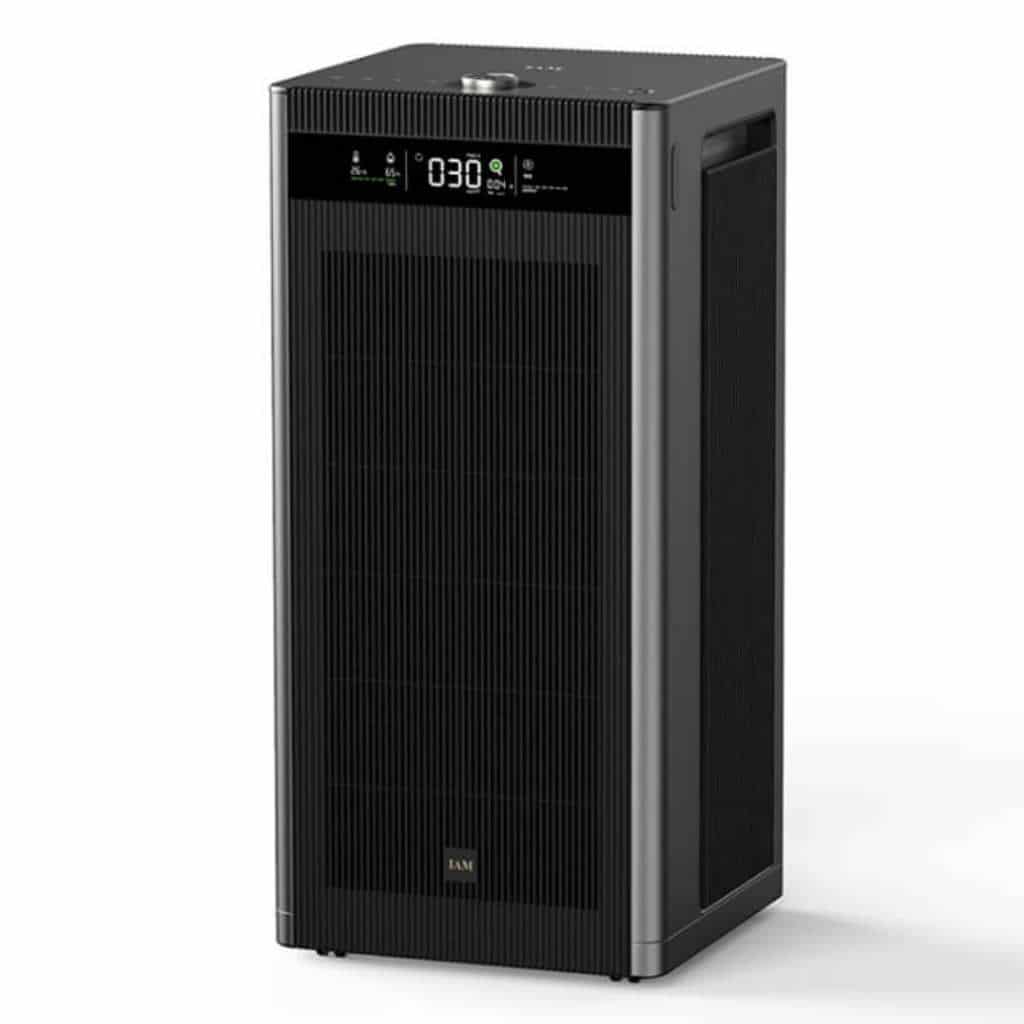
Источник изображения: hisoair.com
HisoAir 1968 - это инновационный воздухоочиститель медицинского класса, способный устранять загрязняющие вещества, включая частицы дыма и их запах, с уровнем PM2.5. Он также может удалять переносимые по воздуху вирусы и бактерии до 99,9%. Кроме того, в нем используется многослойная система фильтрации, включающая предфильтр, H13/14 фильтр True HEPA медицинского класса и фильтр с активированным углем, который удаляет запахи и частицы размером до 0,1 мм.
Эта модель идеально подходит для больших помещений с зоной покрытия 170 м.2-180m2 и легкий - 24,2 кг по сравнению с аналогичными моделями. Обладая производительностью 1500 м3/ч (889 куб. м), он идеально подходит для больших и коммерческих помещений. Кроме того, он работает с исключительно низким уровнем шума 38-66 дБ. Несмотря на мощность, энергопотребление составляет 135 Вт, а вес довольно мал.
Среди других отличительных особенностей - ультрафиолетовое излучение 270-280 нм для эффективного устранения частиц и их запаха, несколько датчиков, анион и фотокатализатор. Кроме того, его предпочитают за уникальную конструкцию воздушного канала, обеспечивающую циркуляцию воздуха на 360°.
| Плюсы | Cons |
|
|
-
Очиститель воздуха Medify Air MA-40-W
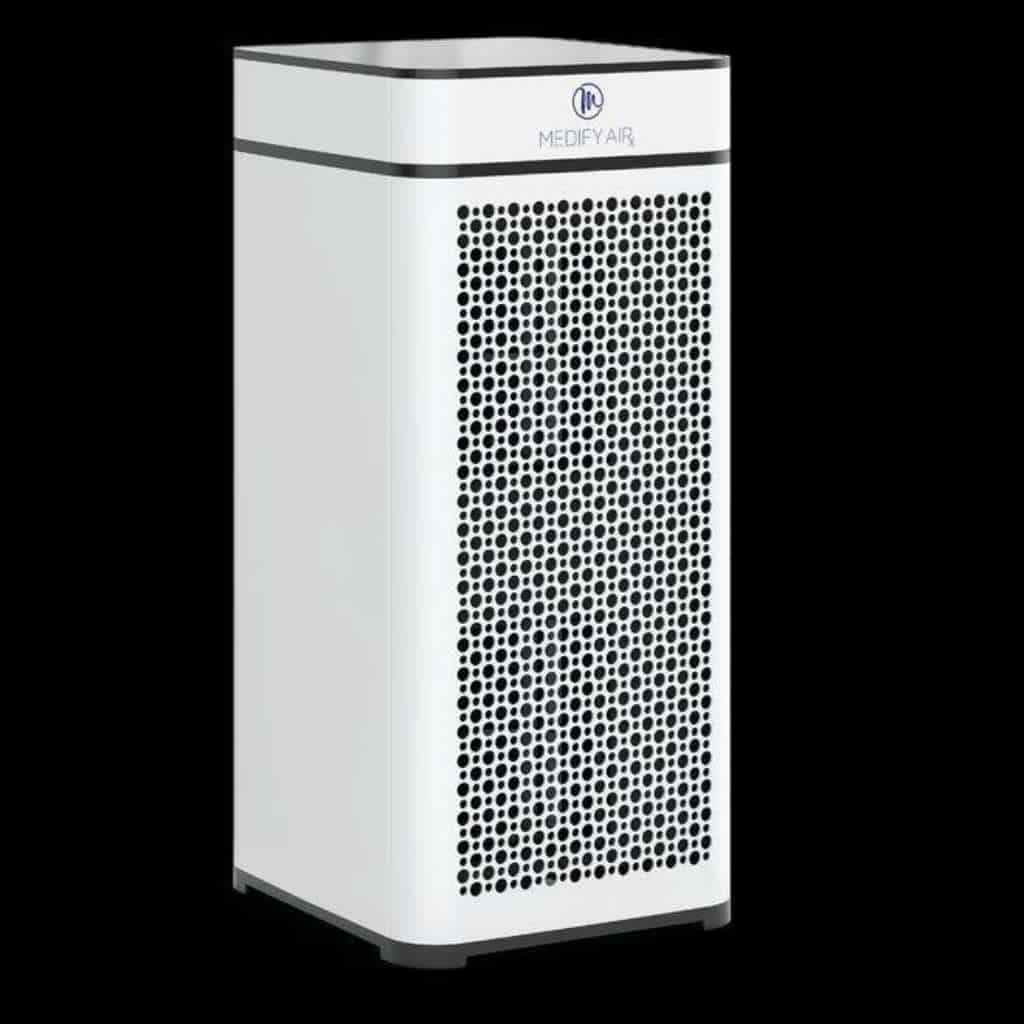
Источник изображения: medifyair.com
Воздухоочиститель Medify Air MA-40-W имеет трехслойную систему фильтрации для больших помещений. Предварительный фильтр помогает задерживать крупные частицы, фильтр True HEPA очищает частицы дыма, а фильтр с активированным углем устраняет запахи. Он может покрывать площадь 420-1600 кв. футов и очищать воздух каждые 15 минут.
Скорость работы обеспечивает уровень шума в диапазоне 46-66 дБ, что делает его подходящим для спальни и гостиной. Среди сертификатов - CARB, Energy Star и ETL. Среди других особенностей - сенсорный экран из закаленного стекла, блокировка от детей и автоматический ночной режим. Однако недостатком является его высокая стоимость.
| Плюсы | Cons |
|
|
-
Очиститель воздуха Levoit Core 300
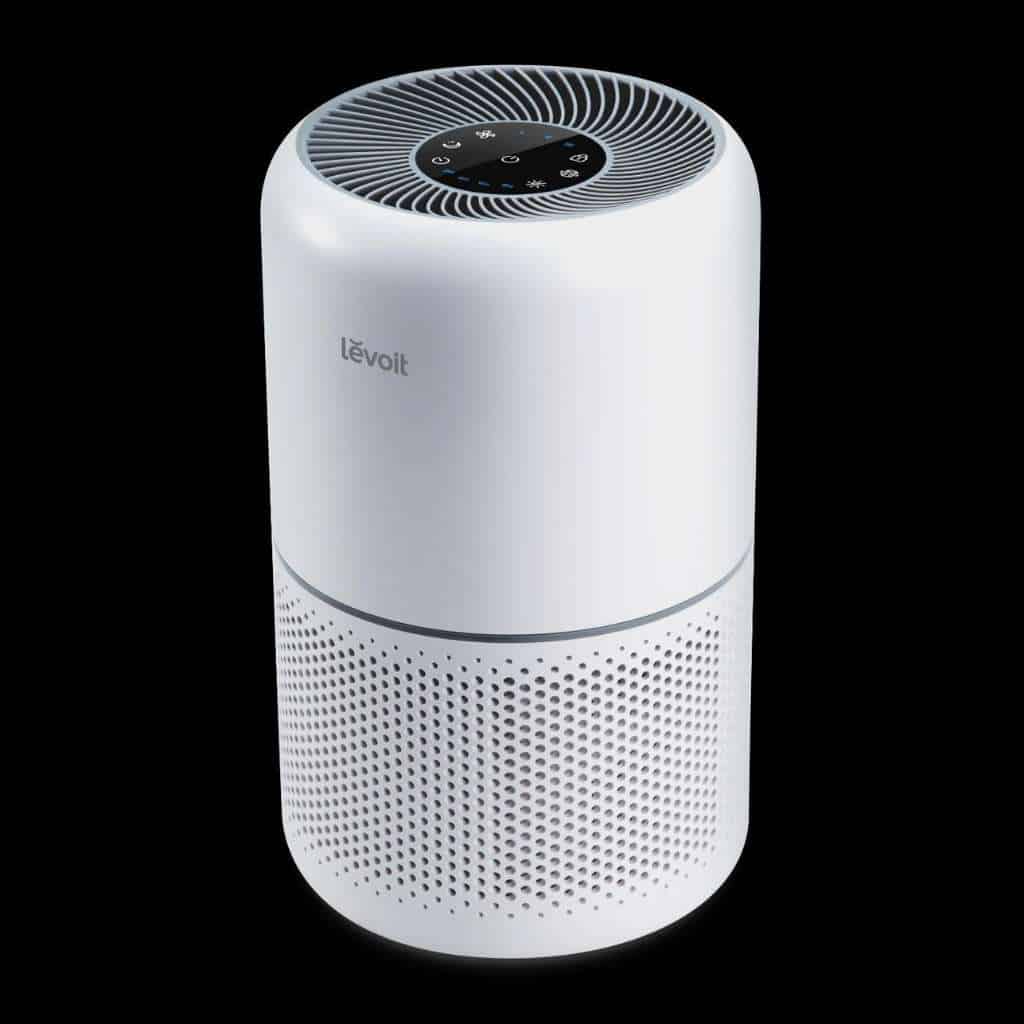
Источник изображения: levoit.com
Очиститель воздуха Levoit Core300 True HEPA оснащен трехступенчатым фильтром, включающим предварительный фильтр, настоящий HEPA-фильтр и фильтр с активированным углем, который задерживает молекулы размером до 0,3 микрона. Он обеспечивает быструю циркуляцию воздуха и может покрыть площадь в 219 кв. футов. Он легкий - 7,5 фунтов, что делает его мобильным, и издает меньше шума, что позволяет ему наилучшим образом работать в небольших помещениях. Однако прибор не способен эффективно очищать воздух от частиц дыма, газов и запахов.
| Плюсы | Cons |
|
|
-
Очиститель воздуха Blueair Blue Pure 411

Источник изображения: blueair.com
Using a HEPA Silent filtration system, Blueair air purifier operates at 17dB – 46dB. It uses minimal energy to clean particles down to 0.3um and eliminates odor with the activated carbon filter. It is also known for its portability, weighing 7.98 pounds. This, however, does not reduce the work quality in any way. It has a coverage area of 185 sq. ft. and cleans up to 5 times in an hour. Its portability does not allow it to be used in large spaces, and the air quality is poor when used.
| Плюсы | Cons |
|
|
-
Очиститель воздуха Hathaspace Smart True HEPA

Источник изображения: amazon.com
Очиститель воздуха Hathaspace Smart True HEPA выделяется своей 5-ступенчатой моделью очистки. Они включают в себя моющийся предфильтр, полипропиленовый предфильтр, HEPA-фильтр медицинского класса H13, фильтр с активированным углем и фильтр с холодным катализатором, который очищает твердые частицы, включая дым, до 0,1 мм. Он охватывает площадь до 1500 кв. футов и очищает один раз в час.
Этот воздухоочиститель также оснащен датчиком качества воздуха и изящной сенсорной панелью, которая позволяет включить автоматический режим или режим тихого сна, а также выбрать скорость работы. В некоторых отзывах говорится о нехватке сменных фильтров и неспособности эффективно устранять сигарный дым.
| Плюсы | Cons |
|
|
Наш вердикт в выборе лучшего очистителя воздуха от дыма
Чтобы воздухоочиститель считался лучшим для удаления дыма, он должен соответствовать определенным стандартам, включая сертификацию. Он также должен быть пригоден для использования с точки зрения CADR, размера и мощности и должен быть способен задерживать частицы размером до 0,3 или даже 0,1 мкм. Наличие других функций также является преимуществом, включая увлажнитель, небольшой вес и минимальный или нулевой уровень шума.
HisoAir отвечает всем этим требованиям, поэтому он является лучшим и настоятельно рекомендуется к использованию. Узнайте, почему мы рекомендуем HisoAir.
- Это воздухоочиститель медицинского класса.
- Он имеет большой CADR и отлично подходит для больших помещений.
- Он тише на 5-10 дБ по сравнению с продукцией конкурентов.
- Несмотря на стоимость, он имеет справедливую цену и является доступным.
- It can trap the smoke’s tiniest particles at 0.1um, leaving your room healthy.
Советы по уходу за собой при курении
Помимо очистителей воздуха, вот несколько советов по предотвращению воздействия дыма:
- Носите респиратор, если у вас нет заболеваний сердца или легких. Обратите внимание, что он не предназначен для детей.
- Избегайте курения в помещении и провоцирующих факторов.
- Запретите курить в комнате и установите очиститель воздуха.
- Уделите внимание своему здоровью.
- Убедитесь, что ваш фильтр чист.
- Проветривайте комнату естественным воздухом, особенно когда не используете очиститель воздуха.
- Выращивайте комнатные растения. Они являются естественными фильтрами воздуха.
На вынос
Существуют простые и легкие способы избавиться от дыма и запаха, но чтобы надолго сохранить здоровье помещения, вы можете положиться на продукцию HisoAir. Наши очистители воздуха от дыма прекрасно справятся с этой задачей. Очистители воздуха, специально разработанные для удаления дыма, - это единственные надежные средства, позволяющие избавить ваше помещение от дыма и его запаха.
Связаться с HisoAir если вам нужна помощь в выборе лучшего воздухоочистителя для ваших целей.
Вы можете найти полезную информацию в других связанных статьях, таких как:



